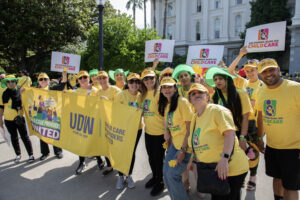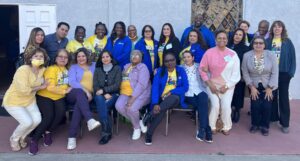
BREAKING: We reached a tentative agreement on our new, 2-year contract with the State!
The child care, elected bargaining team is excited to announce that we have reached a tentative agreement on our new,


The child care, elected bargaining team is excited to announce that we have reached a tentative agreement on our new,

By Marie Coronel SAN DIEGO (KGTV) — As we head into the summer months with schools out, many parents sifting

Pamela never quite imagined herself as a family child care provider. She had planned her life around her career as

In March, CCPU-UDW began our second-ever statewide bargaining negotiations. Our top priority is to fight for and win a new

Author: Jesse Pagan Members of the Child Care Providers United (CCPU) union say the childcare system in California is close to

By Tania Thorne / North County ReporterContributors: Charlotte Radulovich / Video Journalist What would happen if there was no child care? It could cause

By ADAM BEAM SACRAMENTO, Calif. (AP) — Every weekday, Patricia Moran has up to a dozen children in her San

By Annette Nicholson It’s 5 a.m. and the stars are still bright in the sky. I’ve already been awake for

We are experiencing a powerful shift in this country. From the grape fields to Amazon warehouses and Starbucks coffee shops, workers from sectors that are often overlooked and undervalued are coming together to fight for our rights, reawakening and revitalizing the labor movement.
My name is Ana Fierro, and I’m a family child care provider in Modesto. My mother-in-law’s influence iswhat convinced me